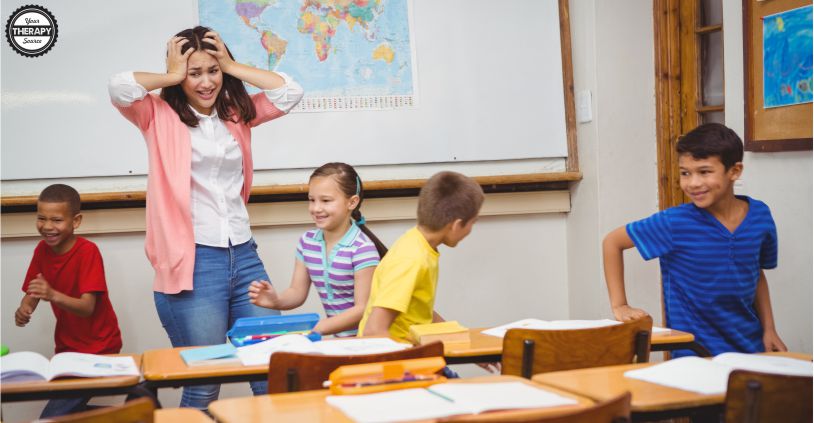Behavior Problems in the Classroom? Research says increase physical activity!

Do you have behavior problems in the classroom? Recent research indicates that increasing physical activity may help. Sounds easy right? Well, how much physical activity? What kind of physical activity? These are all important details that need to be looked at closer when we look at strategies for behavior problems in the classroom.
Previous research has already showed us that short term sessions of exercise have small positive effects on cognition.
In addition, there have been variable effects of movement breaks and active lessons on cognition, academic performance and classroom behavior.
What did the recent study investigate?
The researchers wanted to determine the overall impact of acute classroom movement break and physically active learning interventions on physical activity levels, cognition, academic performance and classroom behavior.
In order to do this, they completed a systemic review, 18 studies were included out of 2929 potentially relevant articles. The studies had to include information on school-based acute bouts of classroom movement breaks or physically active learning lessons on physical activity, cognition, academic performance and classroom behavior.
What did the research say on brain breaks?
After data analysis the researchers determined the following:
- the designs of the research studies were low to medium quality.
- most of the interventions replaced sedentary time with light to vigorous physical activity breaks.
- no support for enhanced cognition or academic performance due to limited repeated studies.
The largest benefits were recorded regarding behavior problems in the classroom. The review indicated that:
- classroom behavior improved after 10 minute sessions or longer of moderate-to-vigorous movement breaks or active lessons.
- behavior problems in the classroom decreased with shorter more intense (5 min) movement breaks or physically active lessons. (9 out of 11 interventions).
How to Help with Behavior Problems in the Classroom
To apply this research study to the classroom, why not try 10 minute sessions or longer of moderate to vigorous movement breaks or physically active lessons. If you are short on time and need to improve behavior, try more intense brain breaks or physically activity during lessons for 5 minute sessions.
Keep data to determine if they brain breaks are helping. Use Google Forms or other data collection tools to help keep track.
Need more research to back up brain breaks?
The Center for Disease Control Research has shown that 5-20 minute movement breaks in the classroom can positively affect the following:
- cognitive skills including executive function, attention span, memory skills and verbal comprehension
- academic achievement on test scores
- attitude changes in motivation and self-concept
- on task behaviors
- organizational skills
- motor planning
- impulse control
Need resources?
More Research on Decreasing Behavior Problems in the Classroom
References:
Centers for Disease Control and Prevention. The association between school based physical activity, including physical education, and academic performance. Atlanta, GA: U.S. Department of Health and Human Services; 2010.
Daly-Smith, A. J., Zwolinsky, S., McKenna, J., Tomporowski, P. D., Defeyter, M. A., & Manley, A. (2018). Systematic review of acute physically active learning and classroom movement breaks on children’s physical activity, cognition, academic performance and classroom behaviour: understanding critical design features. BMJ open sport & exercise medicine, 4(1), e000341.




